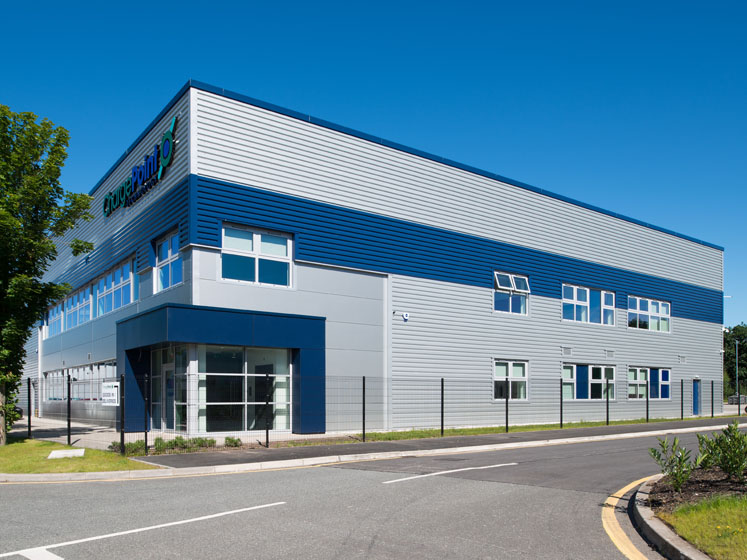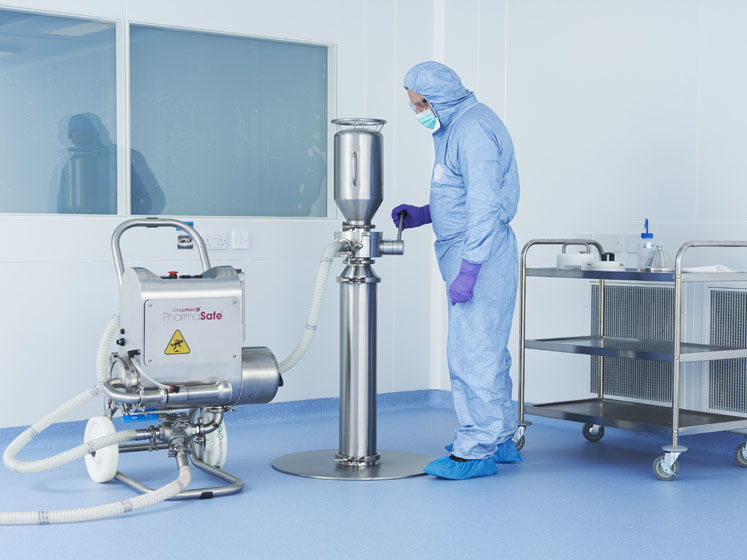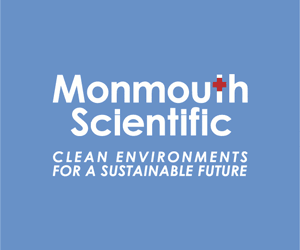These companies must look for innovative ways to expand their cleanroom capacity and remain flexible in their operations, all while avoiding production downtime and adding greater efficiencies, explains Ben Wylie, Senior Product Manager at ChargePoint Technology.
At the same time, they must also contend with rigorous new regulatory requirements. So, how can pharmaceutical companies effectively future-proof their cleanroom investments in 2022 and beyond while also remaining compliant with the latest regulations?
The challenges of future-proofing cleanroom investments
The pharmaceutical industry is always evolving and companies must continually explore new ways to meet increasing market demands, streamline processes and meet regulatory requirements. This may require additional considerations when it comes to future-proofing cleanroom spaces as they may need to be adapted to accommodate new processes and meet capacity requirements. There are two key challenges that pharmaceutical companies face.
Preparing for Annex 1 amendments to the GMP
One of the biggest incoming changes that pharmaceutical companies must prepare for is the update to the European Union Good Manufacturing Practice (GMP) Annex 1, which focuses on the production of sterile medicinal products and is expected to be finalised soon.2 Currently available in draft form, pharmaceutical companies can examine the proposed changes now and take proactive steps to ensure compliance ahead of its finalisation.
The amendment features several key changes, meaning that pharmaceutical companies must ensure the following.
Implementation of a contamination control strategy (CCS): One of the most significant changes pharmaceutical companies must make is the implementation of a contamination control strategy (CCS). This is a formally documented action plan that should examine a holistic, systematic set of control mechanisms within a cleanroom environment.
Under Annex 1 revisions, this strategy should be informed by a living document that is subject to regular review to ensure that companies can achieve a high degree of contamination control throughout all cleanroom processes.
From the overall design of a cleanroom to the processes implemented within, including all risk assessment to validation procedures, the CCS should evaluate various aspects of contamination control, such as
- environment and process design
- facility equipment
- personnel training and gowning procedures
- cleaning and validation procedures
- environmental monitoring
- prevention testing through process simulations.
Training team members in the latest requirements: Once the CCS has been established, it’s also crucial for manufacturers to ensure that all cleanroom team members are fully up to speed with its requirements and properly trained to work in that environment.

This means manufacturers must facilitate clear collaboration between their experts in aseptic processing, contamination control, facility design and the equipment/technologies required for each filling line process. By examining the requirements of the CCS, they can effectively work together to complete each step, meeting Annex 1 requirements more efficiently.
Validation of cleanrooms and connection devices: Current guidelines require all aseptic processing connections to be done under highly classified Grade A environments. However, this latest revision acknowledges recent advancements in specialised connection and transfer devices for sterile processing, which help to further minimise potential contamination in the surrounding environment.
This means that lower grade cleanrooms may be permitted if a thorough CCS has been conducted and the connection device can be validated to show no ingress of microbial contamination.
Preparing for the pivot from high- to small-volume production
While also preparing for the latest regulatory changes, many pharmaceutical companies are also adapting their practices for shifts in batch production. The drive to deliver more personalised medicines, such as cell and gene therapies, to patients at a faster rate has led to a surge in demand for small-batch manufacturing.
However, this approach has implications for the cleanroom environment and the technologies required to process each batch. Throughout the cleanroom ecosystem, it is more common for higher volumes of products to be manufactured in the same facility, each requiring specific processes. Areas must also be properly prepared, sterilised, validated and washed down after each process to ensure no ingress of microbial contamination.
This can be a time-consuming process for any batch size, especially when a manufacturer is regularly producing small batches of different drug products while ensuring stringent sterility regulations are followed. To overcome this challenge, manufacturers may be required to adapt their equipment and facilities to handle multiple batch processes with greater efficiency.
What are the solutions?
To meet both Annex 1 regulations and the shift from high- to small-volume drug production, pharmaceutical companies must explore the latest advancements in sterile processing technology. Owing to the fact that both of these challenges require high levels of sterility assurance, there are solutions that allow manufacturers to meet both requirements at once.
The split butterfly valve: One of these advancements includes the split butterfly valve (SBV). Comprising two components, SBVs consist of one “active” half that connects to production line equipment and a “passive” half that attaches to the charge bag, filling container or primary packaging.
When connected together, these two halves create a single plate that allows the drug product to flow into the container from the production line, ensuring that here is no exposure to the surrounding environment and maintaining a closed processing environment. After use, these two parts are removed from the production line equipment and must be thoroughly cleaned and validated before being used again.
As SBVs result in a closed filling line, it may also be permissible for some manufacturers to do these processes in a cleanroom environment that’s lower than Grade A, provided they have also implemented a thorough CCS. As well as enabling companies to meet Annex 1 sterility requirements, SBVs also help pharmaceutical manufacturers to prepare for the shift to small-batch manufacturing.

Requiring little training or installation to use, these technologies offer manufacturers additional flexibility for multiple batch filling processes.
Single-use components: SBVs are a prime example of the latest advances in aseptic processing technologies that manufacturers can benefit from, but there are additional solutions that allow them to take their compliance measures even further.
By exploring single-use (SU) versions of processing technologies such as the SBV, pharmaceutical companies can eliminate the lengthy cleaning and validation activities that are required after each use … while still achieving the same sterility and filling line benefits with added efficiency.
Technologies such as the SU SBV can be connected to containers in production lines or flexible single-use charge bags to facilitate the contained and sterile transfer of pharmaceutical powders.
This can be done between each step of the manufacturing process and also when transporting drug products between facilities. There is no requirement to clean the component after use as it can simply be disposed of between fillings. As a result, pharmaceutical manufacturers can further reduce the risk of contamination between cleans and achieve greater flexibility and time savings across each drug product transfer process.
Looking ahead
The demand for biologics manufacturing processes such as vaccine filling is set to continue to grow, which means drug manufacturers must take steps now to future-proof their aseptic processes to keep up. Luckily, there have never been more tools available to help manufacturers to develop their processes alongside these changes.
By harnessing SU technologies that seamlessly fit into existing processes, pharma companies can effectively start future-proofing and create the flexibility needed for the next generation of drug products.
References
- https://bisresearch.com/industry-report/aseptic-pharma-processing-market.html.
- www.gmp-compliance.org/files/guidemgr/2020_annex1ps_sterile_medicinal_products_en.pdf.




